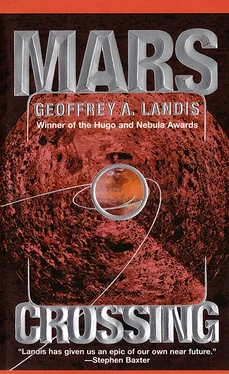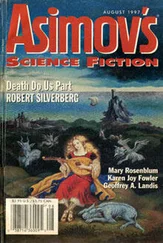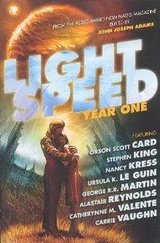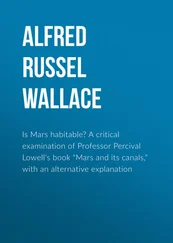“Sure,” Geroch said agreeably. “And we’d rather have a complication here on Earth than halfway to Mars.”
“I can do an appendectomy,” Tana retorted. “And I can deal with complications, thank you.”
“That’s fine, Doctor Jackson,” Geroch replied. “And tell me, can you remove your own appendix?”
“Sure. If I had to.”
“No problem, then. We won’t schedule an appendectomy, then.”
Tana smiled, relieved. She had no qualms doing surgery on other people—once you’ve done it a few times, pulling an appendix was no more challenging, say, than replacing the fuel-cell charge-discharge regulator on her Pontiac—but she didn’t like the thought of other people’s hands inside her own personal body.
“—as long as you can prove that you can remove your own appendix,” Geroch continued smoothly. “Here’s the deal. The way you prove that is for you to do it. So, when do you want to schedule the operating room?”
“Let me get this straight,” Tana said. “If I show you I can remove my appendix, by removing my appendix, then I don’t have to have my appendix removed?”
Dr. Geroch nodded, smiling. “That is correct.”
“Either way, the appendix is gone,” Tana said.
“That’s right.”
Tana sighed. “Okay, okay. Let’s schedule the damn surgery then.”
“Now, you’re talking sense. So. A week from Thursday works for you?”
Tana and Trevor took the path up, trailing the superfiber from the spool on the rockhopper. Ryan insisted that they rope themselves together, worried that the loose and fragmented rock would give way under one of them, and they would slide down the face along with a few hundred tons of boulders. They carried with them an extra spool of superfiber and a rock drill.
The cliff was farther away than it looked. It took them four hours of hard climbing to reach the face, and at the end of it, even with several breaks for rest, Tana’s body was slick with sweat inside the chest-carapace of her suit. Despite the freezing temperature of the Martian air surrounding her, her suit was straining the limits of its thermal control unit to take away her body heat. Trevor unclipped the rope, and they took a well-deserved rest.
“It was a river,” Trevor said. “Look at it! Look!”
The spot where they were sitting was a level, sandy area, nearly circular, surrounded by low banks on all sides except the side they had climbed up. A dry pool at the bottom of an ancient, long dead waterfall. Now that Trevor had pointed it out, it was too clear to miss. Tana had suspected that they were climbing an ancient creek bed the whole climb, from seeing the way the stones were rounded, the way the stream had undercut the banks, and the way the path wound around, seeking the lowest level. But the dry pool was clear evidence.
“There was water here,” Tana agreed. “No doubt.”
Trevor was inspecting the banks. “I wonder if there are fossils?” he said.
After a brief rest, Tana moved to the cliff face and began the process of drilling bolts into the rock to attach anchors for the superfiber. When she had the bolts drilled and the anchors set, she radioed back down to Ryan. “Got the superfiber anchored. Go ahead and reel it in.”
“Copy anchored,” Ryan’s voice came. “I’m ready to reel.”
“Take it slow,” she advised. “Copy that,” Ryan said. “Slow it is.”
Tana noticed that Trevor had disappeared. Exploring, she guessed. The kid couldn’t stay put. Typical.
27
At the Base of the Cliff
This cliff would be easy, Trevor thought, looking up the rock face to the chimney above. A long climb, but not a difficult one. He considered climbing to the top just to show how easy it would be, but decided at last that Ryan would tell him he was violating safety and keep him from exploring any more.
He checked back to verify that he was still in sight of Tana. She was still drilling anchors into the rock. Her bright purple suit, even with a spattered layering of Mars dust over it, was easy to spot. He could still go a little ways without Ryan shouting about safety regulations.
Should he start calling him Commander Martin now? Ryan hadn’t said anything. He seemed less interested in formality than Commander Radkowski had been.
He could see, looking up the cliff face, an overhang. He would be willing to bet that it was another cave, a horizontal slot in the rock that was a mirror image of the one on the south rim. The commander’s death had cut off his opportunity to explore that one, but if he climbed up the splinter of rock angled against the cliff face, he could get a chance to look at this one. Would that be against safety regulations? Probably would, he concluded with some reluctance.
Anyway, according to Tana and Ryan, who had explored it, it was boring anyway. Nothing but salt. Not even any stalactites.
Instead, he followed the base of the cliff around to the right. It wasn’t as if he could get lost here; his sense of direction was still screwy on Mars, but if he just kept his right hand on the wall, he had to come back to the waterfall.
It was a dizzying view down, like the ski slope from hell. It must be miles down; tens of miles, maybe. He couldn’t see where the rockhopper was parked on the slope below, it was so far. He tuned in to the radio for a moment to see what Tana and Ryan were doing, but they were just discussing the superfiber cable, so he turned the radio off again.
The cliff face was extremely interesting. It wasn’t all uniform sandstone, like he’d first thought, but a whole variety of different layers, even different colors, some of it a smooth, grayish blue stone, other layers made of a mixture of rocks all cemented together. Conglomerate; he remembered that from his geology classes. They had that in Arizona, too. Below the conglomerate was a smooth layer of gray rock that looked like slate. Or shale; he always got those two confused. It jutted out and made a little shelf a few inches thick, strong enough that he could stand on it. He thought about jumping up and down to see how strong it was, but decided that it would be a bad idea.
It must have been a flood or something, he thought. No, more likely a lake bottom, or even the bottom of an ocean. All the mud on the bottom settled in a layer, more rocks and stuff got layered on top, and it squished down on it until the mud got squeezed into rock. All this was once muddy ocean floor. And then the ocean or lake or flood or whatever dried up.
Slate—or shale, whatever—was where you find fossils, he recalled. He followed the ledge along, looking carefully, but it was completely flat and uniformed. Boring.
Sometime you had to break the shale open, and the fossil is inside. He wished he had one of those hammers that geologists use. Estrela would have one, he knew, but she was down at the rockhopper. He looked around. Above the shale layer, he found a piece of the conglomerate about the size of a brick that looked ready to come loose. Trevor pried at it with his fingers, worked it back and forth until all of a sudden it popped loose.
He used the rock as a hammer. The shale broke easily, peeling off in flakes like the pages of a book. He looked at each one carefully, hoping for a fossil, but there was still nothing.
When his arm got tired, he put his hammer rock down on the ledge for a rest. He was so tired that his eyes had been looking at it for minutes before his brain noticed that there was something there to look at.
The piece of conglomerate he had been holding had a smooth, concave surface. It had been molded around something. It was hard to tell just what, but it couldn’t be natural. He raced back to the place he had found the rock. The trail of broken shale showed just exactly where he’d been. Yes, there it was, embedded in the rock, the piece that was left behind when he pried out the rock he used as a hammer, like a bas-relief protruding from the wall.
Читать дальше












